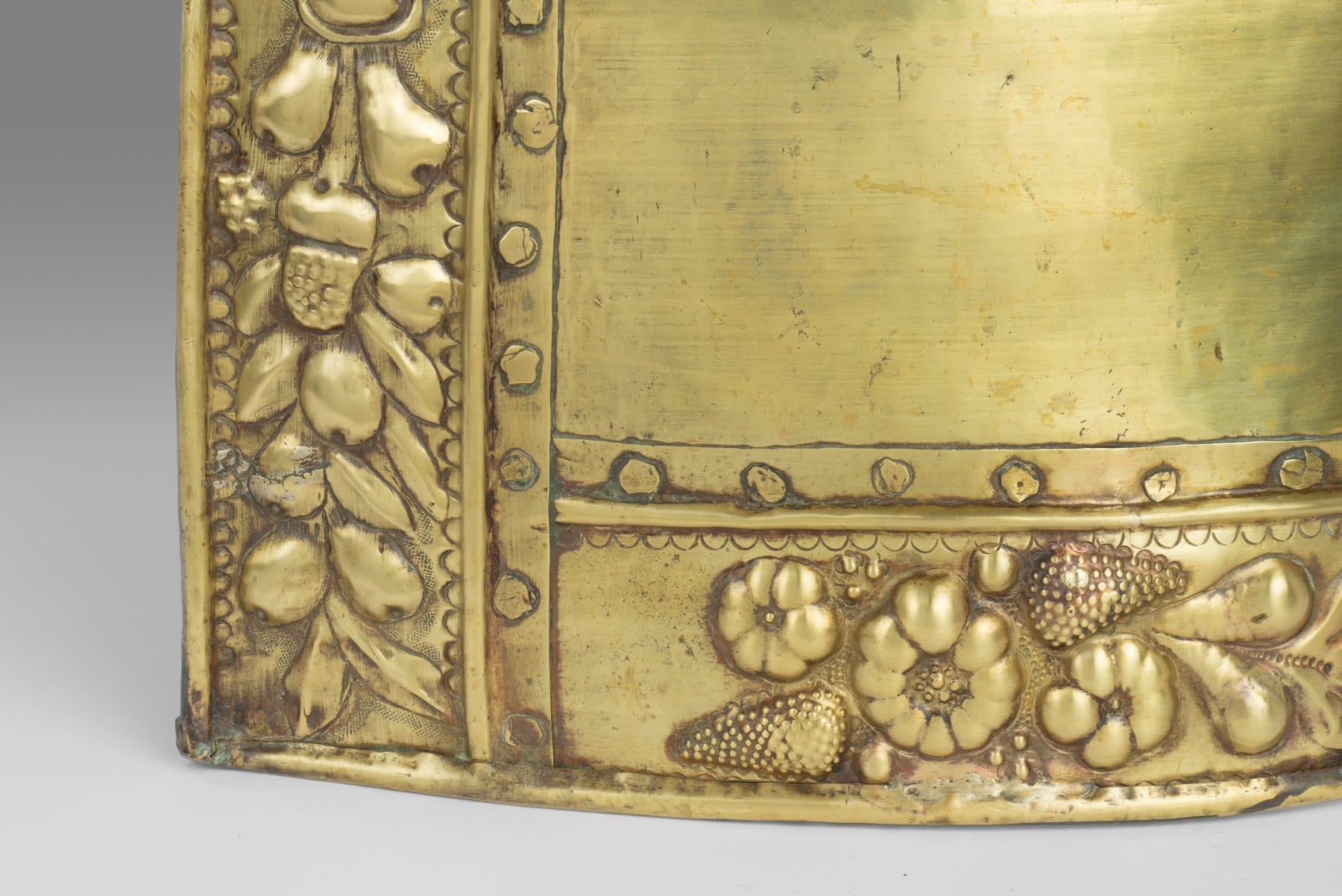Charles II Brass Fire Curfew
ENGLAND, CIRCA 1680
58 x 70 x 41 cm
22 ¾ x 27 ½ x 16 ¼ in
22 ¾ x 27 ½ x 16 ¼ in
7120
Further images
The sides edged with a band of repoussé floral and foliate decoration, the front edge with three sections of similar decoration interspersed with swags, the handle, decorated with foliate scrolls,...
The sides edged with a band of repoussé floral and foliate decoration, the front edge with three sections of similar decoration interspersed with swags, the handle, decorated with foliate scrolls, fruit and a tulip-shaped flower continuing down the front to provide additional strength.
The name 'curfew' comes from the term for 'fire cover' in French - 'couvre-feu'. J. Seymour Lindsay writes in 'Iron and Brass Implements of the English House' 'that households aimed to keep fires burning constantly but in a controlled way to reduce risk and fuel waste, so the fire was raked together and the curfew, usually of brass or copper, was placed over the embers and pushed back, limiting the oxygen flow to the fire, but not extinguishing it completely; the fire could then easily be restarted the next morning (Alec Tiranti, London, 1970, p. 16).
Two 17th century examples can be found in the Victoria and Albert Museum (accession nos. 94-1891 and M.5-1940. Two further examples are illustrated in Gentle and Feild, 'Domestic Metalwork 1640-1820', (Antique Collectors' Club, 1994) p. 329 pl. 2 and 3. A copper curfew decorated with acorns and stags is in the National Trust Collection at East Riddlesden Hall, West Yorkshire (NT 201362).
The Antique Metalware Society discusses curfews with particular reference to number 94-1891 in the Victoria and Albert Museum and comments that ‘Surviving curfews are rare’. (https://www.antiquemetalware.org.uk/2016/11/23/curfew/)
The name 'curfew' comes from the term for 'fire cover' in French - 'couvre-feu'. J. Seymour Lindsay writes in 'Iron and Brass Implements of the English House' 'that households aimed to keep fires burning constantly but in a controlled way to reduce risk and fuel waste, so the fire was raked together and the curfew, usually of brass or copper, was placed over the embers and pushed back, limiting the oxygen flow to the fire, but not extinguishing it completely; the fire could then easily be restarted the next morning (Alec Tiranti, London, 1970, p. 16).
Two 17th century examples can be found in the Victoria and Albert Museum (accession nos. 94-1891 and M.5-1940. Two further examples are illustrated in Gentle and Feild, 'Domestic Metalwork 1640-1820', (Antique Collectors' Club, 1994) p. 329 pl. 2 and 3. A copper curfew decorated with acorns and stags is in the National Trust Collection at East Riddlesden Hall, West Yorkshire (NT 201362).
The Antique Metalware Society discusses curfews with particular reference to number 94-1891 in the Victoria and Albert Museum and comments that ‘Surviving curfews are rare’. (https://www.antiquemetalware.org.uk/2016/11/23/curfew/)












